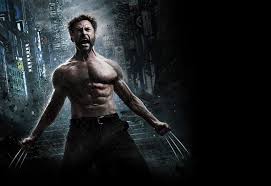Wolverine
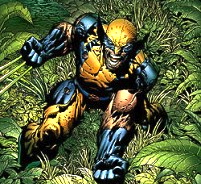
The Wolverine
We’ve been under the assumption that next year’s The Wolverine would continue Logan’s story pre-X-Men, but director James Mangold has revealed our assumption was completely wrong. In an attempt to distance itself from the disappointment that was X-Men Origins: Wolverine, it was announced that the next standalone Wolverine film would not be a direct sequel to the first film. Set photos showing our hero in a Japanese POW camp and the fact that the Japanese themed film would be based on Chris Claremont and Frank Miller’s Wolverine comic storyline – which takes place before Logan joined the X-Men – lead us to believe the film would take place sometime between the events of the first film and the original X-Men trilogy.
Empire Magazine recently spoke with the film’s director who revealed that the bulk of the film will actually take place after the events of X-Men: The Last Stand saying quote:
“Where this film sits in the universe of the films is after them all. Jean Grey is gone, most of the X-Men are disbanded or gone, so there’s a tremendous sense of isolation for him.”
We do know that some of the film will take place in flashback, but the rest will focus on Logan in present day as he falls for the daughter of a Japanese crimelord and must face off against the Silver Samurai and Viper.
So with Jean Grey, aka Phoenix having been killed by Logan in X-Men: The Last Stand and The Wolverine following that film’s timeline, it will be interesting to see how Famke Janssen’s rumored return as Jean Grey will fit in. Will she show up in a flashback or possible dream sequence as Logan has to deal with his decision to kill her? We were excited before for The Wolverine to hit theaters next July, but this news has us even more intrigued on what they plan on doing with the character and where they plan on taking him. What about you? Are you excited to see Wolverine back in present day or would you have liked to see them explore his pre-X-Men days a bit more? Let us know below or over on Twitter @ClevverMovies. Until next time, I’m Erin Darling, thanks for watching!
 Wolverine on the cover of The New Avengers #5 (March 2005).
Wolverine on the cover of The New Avengers #5 (March 2005).
Art by David Finch.
Wolverine is a fictional character, a superhero who appears in comic books published by Marvel Comics. Born James Howlett and commonly known as Logan, Wolverine is a mutant who possesses animal-keen senses, enhanced physical capabilities and a healing factor that allows him to recover from virtually any wound, disease, or toxin at an accelerated rate. The healing factor also slows down his aging process, enabling him to live beyond a normal human lifespan. His powerful healing factor enabled him to survive having the near-indestructible metal alloy adamantium bonded to his skeleton. He is most often depicted as a member of the X-Men, Alpha Flight, or later the Avengers.
The character first appeared in the last panel of The Incredible Hulk #180, with his first full appearance in #181 (cover-dated Nov. 1974). He was created by writer Len Wein and Marvel art director John Romita, Sr., who designed the character, and was first drawn for publication by Herb Trimpe. Wolverine then joined a revamped version of the superhero team the X-Men, where eventually writer Chris Claremont and artist-writer John Byrne would play significant roles in the character’s development. Artist Frank Miller collaborated with Claremont and helped to revise the character with a four-part eponymous limited series from September to December 1982 in which Wolverine’s catchphrase, “I’m the best there is at what I do, but what I do best isn’t very nice,” debuted.
Wolverine was typical of the many tough, anti-authority, antiheroes that emerged in American popular culture after the Vietnam War; his willingness to use deadly force and his brooding nature became standard characteristics for comic book anti-heroes by the end of the 1980’s. As a result, the character became a fan favorite of the increasingly popular X-Men franchise. Wolverine has been featured in his own solo comic since 1988 and has been a central character in most X-Men adaptations, including animated television series, video games, and the live-action 20th Century Fox X-Men film series, in which he is portrayed by Hugh Jackman. In May 2008, Wolverine was ranked #1 out of Wizard magazine’s Top 200 Comic Book Characters of All Time and was ranked as the 4th Greatest Comic Book Character by Empire magazine in July 2008. On their list of the 100 Greatest Fictional Characters, Fandomania.com ranked Wolverine at #21. In May 2011, Wolverine was ranked 4th on IGN’s Top 100 Comic Book Heroes.
Publication history
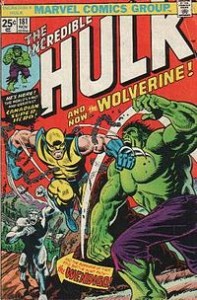 Wolverine made his debut in The Incredible Hulk #181 (Nov. 1974). Art by Herb Trimpe.
Wolverine made his debut in The Incredible Hulk #181 (Nov. 1974). Art by Herb Trimpe.
Marvel editor-in-chief Roy Thomas asked writer Len Wein to devise a character specifically named Wolverine, who is Canadian and of small stature and with awolverine‘s fierce temper.[10] John Romita, Sr. designed the first Wolverine costume, and believes he introduced the retractible claws, saying, “When I make a design, I want it to be practical and functional. I thought, ‘If a man has claws like that, how does he scratch his nose or tie his shoelaces?'” Wolverine first appeared in the final “teaser” panel of The Incredible Hulk #180 (cover-dated Oct.1974) written by Wein and penciled by Herb Trimpe. The character then appeared in a number of advertisements in various Marvel Comics publications before making his first major appearance in The Incredible Hulk #181 (Nov. 1974) again by Wein and Trimpe, who said he “distinctly remembers” Romita’s sketch and that, “The way I see it, [Romita and writer Len Wein] sewed the monster together and I shocked it to life! … It was just one of those secondary or tertiary characters, actually, that we were using in that particular book with no particular notion of it going anywhere. We did characters in The [Incredible] Hulk all the time that were in [particular] issues and that was the end of them.”
The character’s introduction was ambiguous, revealing little beyond his being a superhuman agent of the Canadian government. In these appearances, he does not retract his claws, although Wein stated they had always been envisioned as retractable. He appears briefly in the finale to this story in The Incredible Hulk #182.
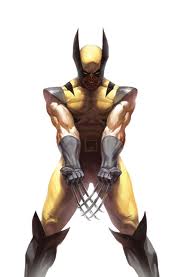 Wolverine’s next appearance was in 1975’s Giant-Size X-Men #1, written by Wein and penciled by Dave Cockrum, in which Wolverine is recruited for a new squad. Gil Kane illustrated the cover artwork but incorrectly drew Wolverine’s mask with larger headpieces. Dave Cockrum liked Kane’s accidental alteration (believing it to be similar to Batman‘s mask) and incorporated it into his own artwork for the actual story. Cockrum was also the first artist to draw Wolverine without his mask, and the distinctive hairstyle became a trademark of the character.
Wolverine’s next appearance was in 1975’s Giant-Size X-Men #1, written by Wein and penciled by Dave Cockrum, in which Wolverine is recruited for a new squad. Gil Kane illustrated the cover artwork but incorrectly drew Wolverine’s mask with larger headpieces. Dave Cockrum liked Kane’s accidental alteration (believing it to be similar to Batman‘s mask) and incorporated it into his own artwork for the actual story. Cockrum was also the first artist to draw Wolverine without his mask, and the distinctive hairstyle became a trademark of the character.
A revival of X-Men followed, beginning with X-Men #94 (Aug. 1975), drawn by Cockrum and written by Chris Claremont. In X-Menand Uncanny X-Men, Wolverine is initially overshadowed by the other characters, although he does create tension in the team as he is attracted to Cyclops’ girlfriend, Jean Grey. As the series progressed, Claremont and Cockrum (who preferred Nightcrawler) considered dropping Wolverine from the series; Cockrum’s successor, artist John Byrne, championed the character, later explaining, as a Canadian himself, he did not want to see a Canadian character dropped. Byrne created Alpha Flight, a group of Canadian superheroes who try to recapture Wolverine due to the expense their government incurred training him. Later stories gradually establish Wolverine’s murky past and unstable nature, which he battles to keep in check. Byrne also designed a new brown-and-tan costume for Wolverine, but retained the distinctive Cockrum cowl.
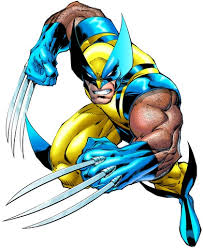 Following Byrne’s departure, Wolverine remained in X-Men. The character’s growing popularity led to a solo, four-issue, Wolverine(Sept.–Dec. 1982), by Claremont and Frank Miller, followed by the six-issue Kitty Pryde and Wolverine by Claremont and Al Milgrom (Nov. 1984 – April 1985). Marvel launched an ongoing solo book written by Claremont with art by John Buscema in November 1988. It ran for 189 issues. Larry Hama later took over the series and had an extensive run. Other writers who wrote for the two Wolverine ongoing series include Peter David, Archie Goodwin, Erik Larsen, Frank Tieri, Greg Rucka, Mark Millar, and Gregg Hurwitz. Many artists have also worked on the series, including John Byrne, Gene Colan, Marc Silvestri, Mark Texeira,Adam Kubert, Leinil Francis Yu, Rob Liefeld, Sean Chen, Darick Robertson, John Romita, Jr., and Humberto Ramos. During the 1990’s, the character was revealed to have bone claws, after his adamantium is ripped out by Magneto in X-Men #25, which was inspired by a passing joke of Peter David’s.
Following Byrne’s departure, Wolverine remained in X-Men. The character’s growing popularity led to a solo, four-issue, Wolverine(Sept.–Dec. 1982), by Claremont and Frank Miller, followed by the six-issue Kitty Pryde and Wolverine by Claremont and Al Milgrom (Nov. 1984 – April 1985). Marvel launched an ongoing solo book written by Claremont with art by John Buscema in November 1988. It ran for 189 issues. Larry Hama later took over the series and had an extensive run. Other writers who wrote for the two Wolverine ongoing series include Peter David, Archie Goodwin, Erik Larsen, Frank Tieri, Greg Rucka, Mark Millar, and Gregg Hurwitz. Many artists have also worked on the series, including John Byrne, Gene Colan, Marc Silvestri, Mark Texeira,Adam Kubert, Leinil Francis Yu, Rob Liefeld, Sean Chen, Darick Robertson, John Romita, Jr., and Humberto Ramos. During the 1990’s, the character was revealed to have bone claws, after his adamantium is ripped out by Magneto in X-Men #25, which was inspired by a passing joke of Peter David’s.
In addition to the Wolverine series and appearances in the various X-Men series, two other storylines expand upon the character’s past: “Weapon X”, by writer-artist Barry Windsor-Smith, serialized in Marvel Comics Presents #72-84 (1991); and Origin, a six-issue limited series by co-writers Joe Quesada, Paul Jenkins, and Bill Jemas and artist Andy Kubert (Nov. 2001 – July 2002). A second solo series, Wolverine: Origins, written by Daniel Way with art by Steve Dillon, spun off of, and runs concurrently with, the second Wolverine solo series.
Wolverine appeared as a regular character throughout the 2010-2013 Avengers series, from issue #1 (July 2010) through its final issue #34 (January 2013). Wolverine appeared as a regular character throughout virtually all of the 2010-2013 New Avengersseries.
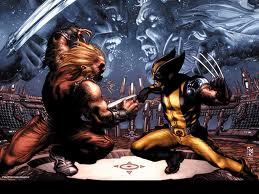 Wolverine’s first intended origin
Wolverine’s first intended origin
Despite suggestions that co-creator Len Wein originally intended for Logan to be a mutated wolverine cub, evolved to humanoid form by an already established Marvel geneticist, the High Evolutionary, Wein denies this:
“While I readily admit that my original idea was for Wolvie’s claws to extend from the backs of his gloves … I absolutely did not ever intend to make Logan a mutated wolverine. I write stories about human beings, not evolved animals (with apologies for any story I may have written that involved the High Evolutionary). The mutated wolverine thing came about long after I was no longer involved with the book. I’m not certain if the idea was first suggested by Chris Claremont, the late, much-missed Dave Cockrum, or John Byrne when he came aboard as artist, but it most certainly did not start with me.”
Wein said on the X-Men Origins: Wolverine blu-ray special features that he has read “Ten things you did not know about Wolverine,” which states the character was originally intended to be a mutated wolverine cub, and that this rekindled Wein’s frustration. He again stated that he had “always known that Wolverine was a mutant.”
In X-Men #98 (April 1976), a biological analysis of Wolverine suggests that he was in some way different from the other X-Men, and in X-Men #103, Wolverine says he does not believe in leprechauns, to which the leprechaun replies, “Maybe leprechauns don’t believe in talkin’ wolverines, either.”
In an article about the evolution of Wolverine included in a 1986 reprint of The Incredible Hulk #180-181, titled Incredible Hulk and Wolverine, Cockrum said he considered having the High Evolutionary play a vital role in making Wolverine a human. Writer Wein wanted Wolverine to be the age of a young adult, with superhuman strength and agility similar to Spider-Man. This changed when Wein saw Cockrum’s drawing of the unmasked Wolverine as a hairy 40-year-old. Wein originally intended the claws to be retractable and part of Wolverine’s gloves, and both gloves and claws would be made of adamantium. Chris Claremont eventually revealed that they were an integrated part of Wolverine’s anatomy in X-Men #98 (April 1976). Writer Jeph Loeb used a similar origin for Wolverine in the Marvel continuity, having feral mutants be an evolved lifeform.
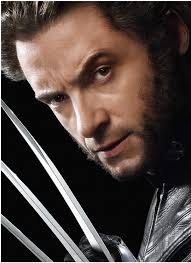 Wolverine’s second intended origin
Wolverine’s second intended origin
John Byrne said in interviews and on his website that he drew a possible face for Wolverine, but then learned that Dave Cockrum had already drawn him unmasked in X-Men #98 (April 1976), long before Byrne’s run on the series. Later, Byrne used the drawing for the face of Sabretooth, an enemy of the martial artist superhero Iron Fist, whose stories Chris Claremont was writing. Byrne then had the idea of Sabretooth being Wolverine’s father. Together, Byrne and Claremont came up with Wolverine being approximately 60 years old and having served in World War II after escaping from Sabretooth, who was approximately 120 years old. The plan had been for Wolverine to have been almost crushed in an accident; he would discover, when attempting to stand for the first time after recovering, that his healing factor does not work on bones, and his legs immediately break. He then spends over a decade in a hospital bed, almost going mad, when the Canadian government approaches him with the idea of replacing his skeleton one bone at a time with adamantium, the claws being a surprise. This origin, too, was never used.
Fictional character biography
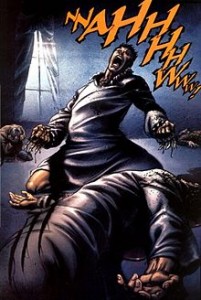 Wolverine first uses his claws in Origin#2. Art by Andy Kubert and Richard Isanove.
Wolverine first uses his claws in Origin#2. Art by Andy Kubert and Richard Isanove.
As shown in the 2001–2002 miniseries Origin, Wolverine was born as James Howlett in Alberta, Canada, in the late 1880s, to rich farm owners John and Elizabeth Howlett. As the Origin miniseries insinuates and the Wolverine Goes to Hell story fully reveals, however, he is actually the illegitimate son of the Howlett’s groundskeeper, Thomas Logan. After being thrown off of the Howlett’s property for violent actions perpetrated by his other son, named simply Dog, Thomas returns to the Howlett manor and kills John Howlett. In retaliation, young James kills Thomas with bone claws that emerge from the back of his hands and is cast out by his mother (who then kills herself). His grandfather sends him away with his childhood companion, Rose (who closely resembles Jean Grey). The character grows into manhood on a mining colony in the Yukon Territory, adopting the name “Logan.” After accidentally killing Rose with his claws, Logan leaves the colony and lives for a time in the wilderness among wolves until returning to civilization, residing with the Blackfoot Indians. Following the death of his Blackfoot lover, Silver Fox, at the hands of Sabretooth, he is ushered into the Canadian military during World War I. Logan then spends some time in Madripoor, before settling in Japan, where he marries Itsu and has a son, Daken.
During World War II, Logan teams up with Captain America and continues a career as a soldier-of-fortune/adventurer. He then serves with the 1st Canadian Parachute Battalion during D-Day, and the CIA, before being recruited by Team X, a black ops unit.
As a member of Team X, Logan is given false memory implants. He continues on the team, until he is able to break free of the mental control and joins the Canadian Defense Ministry. Logan is subsequently kidnapped by the Weapon X program, where he remains captive and experimented on, until he escapes, as shown in Barry Windsor-Smith‘s “Weapon X” storyline which ran in Marvel Comics Presents. It is during his imprisonment by Weapon X that he has unbreakable adamantium forcibly fused onto his bones.
Logan is eventually discovered by James and Heather Hudson, who help him recover his humanity. Following his recovery, Logan, this time under the supervision of Department H, once again works as an intelligence operative for the Canadian government. Logan becomes Wolverine, one of Canada’s first superheroes. In his first mission, he is dispatched to stop the destruction caused by a brawl between the Hulk and the Wendigo.
Later on, Professor Charles Xavier recruits Wolverine to a new team of X-Men. Disillusioned with his Canadian intelligence work and intrigued by Xavier’s offer, Logan resigns from Department H. It was later revealed, however, that Professor X had wiped Logan’s memories and forced him to join the X-Men after Wolverine was sent to assassinate Xavier.
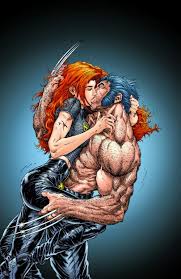 In X-Men #25 (1993), at the culmination of the “Fatal Attractions” crossover, the supervillain Magneto forcibly removes the adamantium from Wolverine’s skeleton. This massive trauma causes his healing factor to burn out and also leads to the discovery that his claws are actually bone. Wolverine leaves the X-Men for a time, embarking on a series of adventures during which his healing factor returns, greatly increased in speed and efficiency (due to the fact that the adamantium in his bones used a considerable amount of his healing factor on a constant basis). It is also realised at this time that Wolverine constantly mutates (unlike other mutants) and that the adamantium slowed his mutation to a halt. His natural abilities such as healing factor and animalistic senses increase slowly over time. Feral by nature, Wolverine’s mutation process will eventually cause him to degenerate physically into a more primitive, bestial state. After his return to the X-Men, Cable‘s son Genesis kidnaps Wolverine and attempts to re-bond adamantium to his skeleton. This is unsuccessful and causes Wolverine’s mutation to accelerate out of control. He is temporarily changed into a semi-sentient beast-like form in which he gains greater physical power than ever before, at the price of part of his humanity. Eventually, the villain Apocalypse captures Wolverine, brainwashes him into becoming the Horseman Death, and successfully re-bonds adamantium to his skeleton. Wolverine overcomes Apocalypse’s programming and returns to the X-Men.
In X-Men #25 (1993), at the culmination of the “Fatal Attractions” crossover, the supervillain Magneto forcibly removes the adamantium from Wolverine’s skeleton. This massive trauma causes his healing factor to burn out and also leads to the discovery that his claws are actually bone. Wolverine leaves the X-Men for a time, embarking on a series of adventures during which his healing factor returns, greatly increased in speed and efficiency (due to the fact that the adamantium in his bones used a considerable amount of his healing factor on a constant basis). It is also realised at this time that Wolverine constantly mutates (unlike other mutants) and that the adamantium slowed his mutation to a halt. His natural abilities such as healing factor and animalistic senses increase slowly over time. Feral by nature, Wolverine’s mutation process will eventually cause him to degenerate physically into a more primitive, bestial state. After his return to the X-Men, Cable‘s son Genesis kidnaps Wolverine and attempts to re-bond adamantium to his skeleton. This is unsuccessful and causes Wolverine’s mutation to accelerate out of control. He is temporarily changed into a semi-sentient beast-like form in which he gains greater physical power than ever before, at the price of part of his humanity. Eventually, the villain Apocalypse captures Wolverine, brainwashes him into becoming the Horseman Death, and successfully re-bonds adamantium to his skeleton. Wolverine overcomes Apocalypse’s programming and returns to the X-Men.
In 2005, author Brian Michael Bendis had Wolverine join the Avengers. After the miniseries House of M, Wolverine regains his memories and prepares to seek out and enact vengeance on those who wronged him. In Wolverine: Origins, the character’s second solo series, Wolverine discovers that he has a son named Daken, who has been brainwashed and made a living weapon by the villain Romulus, the man behind Wolverine’s own brainwashing. Wolverine then makes it his mission to rescue Daken and stop Romulus from manipulating or harming anyone again.
During the events of the Messiah Complex storyline, Cyclops orders Wolverine to reform X-Force. Since then, Wolverine and the team (initially consisting of X-23, Warpath, and Wolfsbane) have starred in a new monthly title. The team was also featured in the “Messiah War” storyline, a sequel to Messiah Complex. After the events of Second Coming, Cyclops ends the X-Force program, but Wolverine continues a new X-Force team in secrecy with Angel/Archangel, Psylocke, Deadpool and Fantomex.
In 2008, writer Mark Millar and artist Steve McNiven explored a possible future for Wolverine in an eight-issue story arc entitled “Old Man Logan” that debuted with Wolverine #66. Millar, the writer for the story, said, “It’s The Dark Knight Returns for Wolverine, essentially. The big, wide, show-stopping series that plays around with the most popular Marvel character of the last forty years, a dystopian vision of the Marvel Universe and a unique look at their futures. The heroes have gone, the villains have won and we’re two generations away from the Marvel we know.”
In X-Men #5, it is revealed that in order for Wolverine to fully infiltrate the ranks of the vampires that were attacking Utopia at the behest of Dracula’s son (when Wolverine thought the vampire virus had simply bested his healing factor), Cyclops has to infect him with nanites that are capable of shutting off Wolverine’s healing factor. Cyclops can activate them by merely clicking a button on a remote control device he carries with him at all times.

